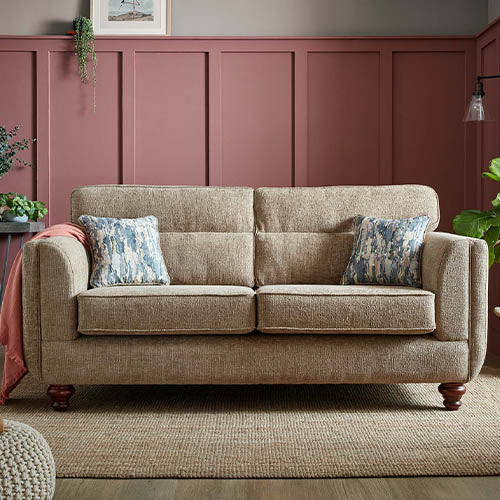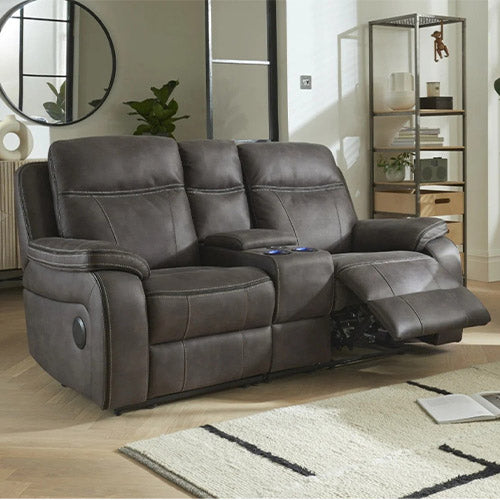A Breath of Fresh Air: Incorporating Plants into Your Living Room
Imagine walking into a living room filled with lush, vibrant plants. Instantly, the space feels fresher, brighter, and more inviting. Beyond their obvious aesthetic appeal, indoor plants can significantly enhance the atmosphere of a room by improving air quality, increasing humidity, and promoting a sense of well-being and tranquility. In fact, incorporating plants into your living room can transform it into a lively, serene, and comfortable space where you'd love to unwind.
However, to successfully integrate plants into your living room, it's essential to consider factors such as the room's light conditions, temperature, and humidity, as well as your decor style and the specific care requirements of each plant. This blog post will guide you through these considerations and provide practical tips to help you cultivate a verdant and healthy indoor oasis in your living room. Let's breathe new life into your living space!

Understanding Your Environment
Before you head out and buy a bunch of houseplants, it's essential to understand your living room's conditions. Plants, just like us, need certain conditions to thrive. Let's break down the main factors of a happy house plant:
Light
Some plants need a lot of sunlight, while others do well in low light. Assess the amount of natural light your living room receives throughout the day. Take note of which areas get direct sunlight and which ones remain in shadow. South-facing windows usually provide the most light, while north-facing ones provide the least. East and west-facing windows fall somewhere in the middle.
Temperature
Most indoor plants prefer temperatures between 15-24°C, similar to what most of us find comfortable. However, some plants may require warmer or cooler conditions. Consider the general temperature of your living room and any fluctuations that may occur.
Humidity
Many popular houseplants are native to tropical environments and thus prefer higher humidity. Living rooms can often be dry due to heating or air conditioning, so you'll want to consider how you can add humidity if needed.
Knowing your living room's conditions will guide you in selecting plants that are well-suited for the environment and will have the best chance of survival. Plus, understanding these factors can also save you from wasting time and money on plants that are unlikely to thrive in your space.

Choosing the Right Plants
With a solid understanding of your living room's conditions, you're now ready to select your plants. While there are thousands of houseplants to choose from, some are particularly well-suited to indoor life. Here are some options to consider based on your living room's conditions:
Low Light
- Snake Plant (Sansevieria trifasciata): Known for its upright, sword-like leaves, the snake plant is incredibly resilient and can survive in low light and with little maintenance.
- ZZ Plant (Zamioculcas zamiifolia): With its shiny, dark green leaves, the ZZ plant can survive in low light and requires minimal watering.
Medium Light
- Peace Lily (Spathiphyllum): This plant produces beautiful white flowers and thrives in medium, indirect light.
- Spider Plant (Chlorophytum comosum): Known for its long, arching leaves, the spider plant is adaptable and thrives in a range of light conditions.
Bright Light
- Fiddle Leaf Fig (Ficus lyrata): With its large, sculptural leaves, the fiddle leaf fig is a statement maker but it needs lots of bright, indirect light.
- Jade Plant (Crassula ovata): This succulent requires lots of light and minimal watering. It can grow quite large over time.
Each of these plants brings a unique aesthetic to your space. Some, like the snake plant and ZZ plant, have a more architectural look. Others, like the peace lily and spider plant, bring a touch of classic greenery. Remember to consider each plant's maintenance needs as well, ensuring they align with your lifestyle and commitment level to plant care. It's important to choose plants that you not only find beautiful but can also happily cohabitate with!

Positioning Your Plants
Now that you've chosen your plants, it's time to place them in your living room. The positioning of your plants can greatly influence their health and growth, and it can also affect the aesthetics and vibe of your room. Here are some pointers:
Light Access
Make sure your plants are positioned to receive the right amount of light based on their needs. Plants requiring more light should be placed near south-facing windows or under artificial grow lights, while those preferring lower light conditions can be set further back in the room.
Exposure to Drafts
Plants can be sensitive to sudden temperature changes. Avoid placing them near heaters, air conditioners, or draughty windows.
Grouping
Grouping plants together can create a more dramatic visual impact, and it can also increase local humidity, which is beneficial for many houseplants. Just ensure that each plant within the group still gets enough light.
Varying Heights
Play with varying heights to create a dynamic display. Use plant stands, shelves, or even hanging baskets to add vertical interest to your living room plant arrangement.
Visual Balance
Consider the size and shape of each plant and how it fits into your overall room decor. Larger plants can be used as focal points, while smaller ones can soften the lines of furniture or fill in corners.
Remember, you can always move your plants around if they seem unhappy or if you want to change up the look of your room. They're a great way to keep your space feeling fresh and alive.

Embracing the Green in Your Living Room Design
Adding plants to your living room is more than just a decor decision; it's a commitment to nurturing growth and embracing nature within your home. Whether you're a seasoned plant parent or a novice, we hope this guide has given you some valuable insights into selecting, positioning, and caring for your indoor plants.
Remember, plants are incredibly diverse, and the best approach is to choose ones that match your living room conditions, your personal style, and your lifestyle. Don't be afraid to experiment and move your plants around until they're in the perfect spot. They're a living part of your decor, after all!
Incorporating plants into your living room decor not only adds a pop of colour and life but also creates a soothing atmosphere, which is essential in any space designed for relaxation and socialising. So, why not embrace your green thumb and start transforming your living room into a lush indoor oasis? Happy planting!



